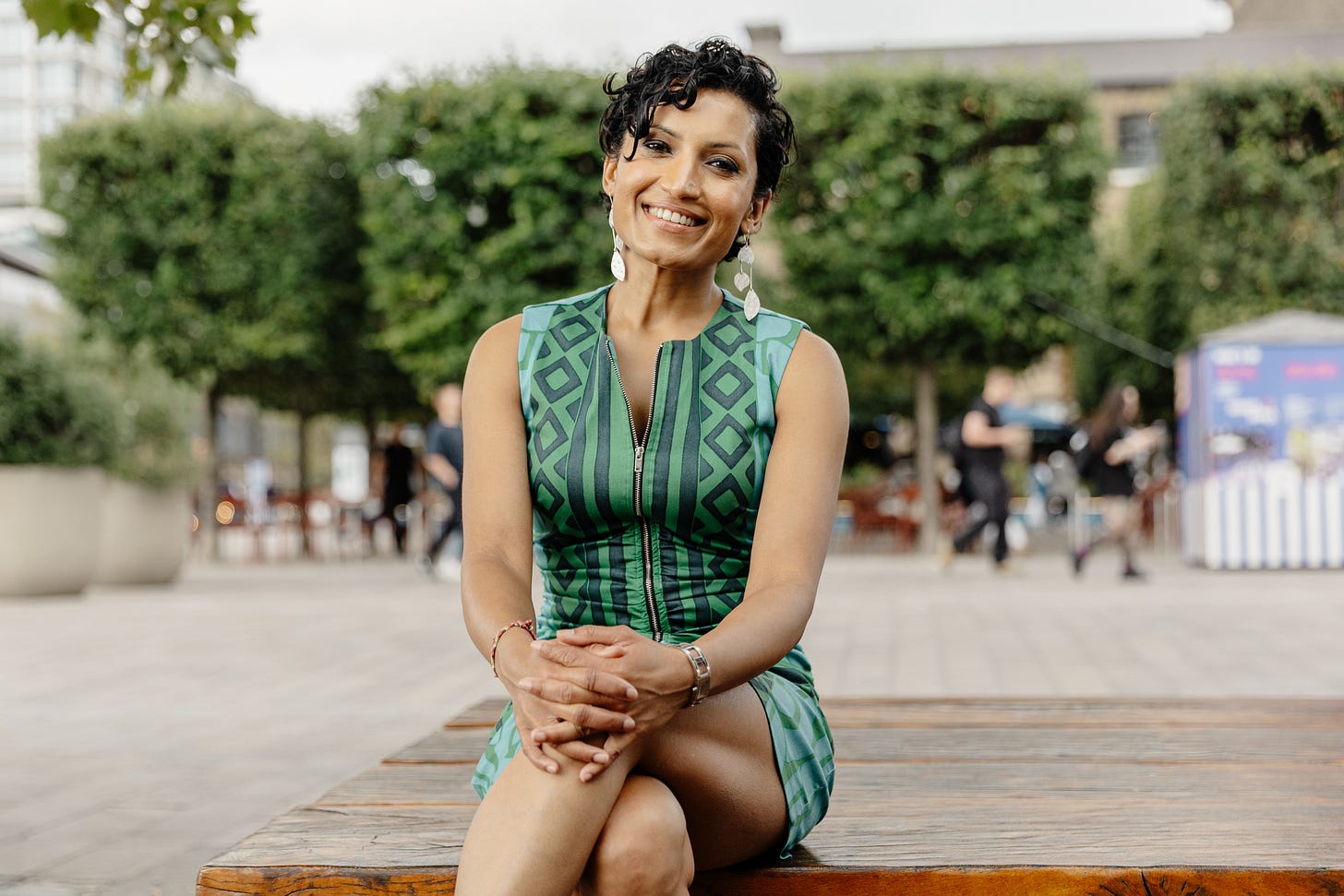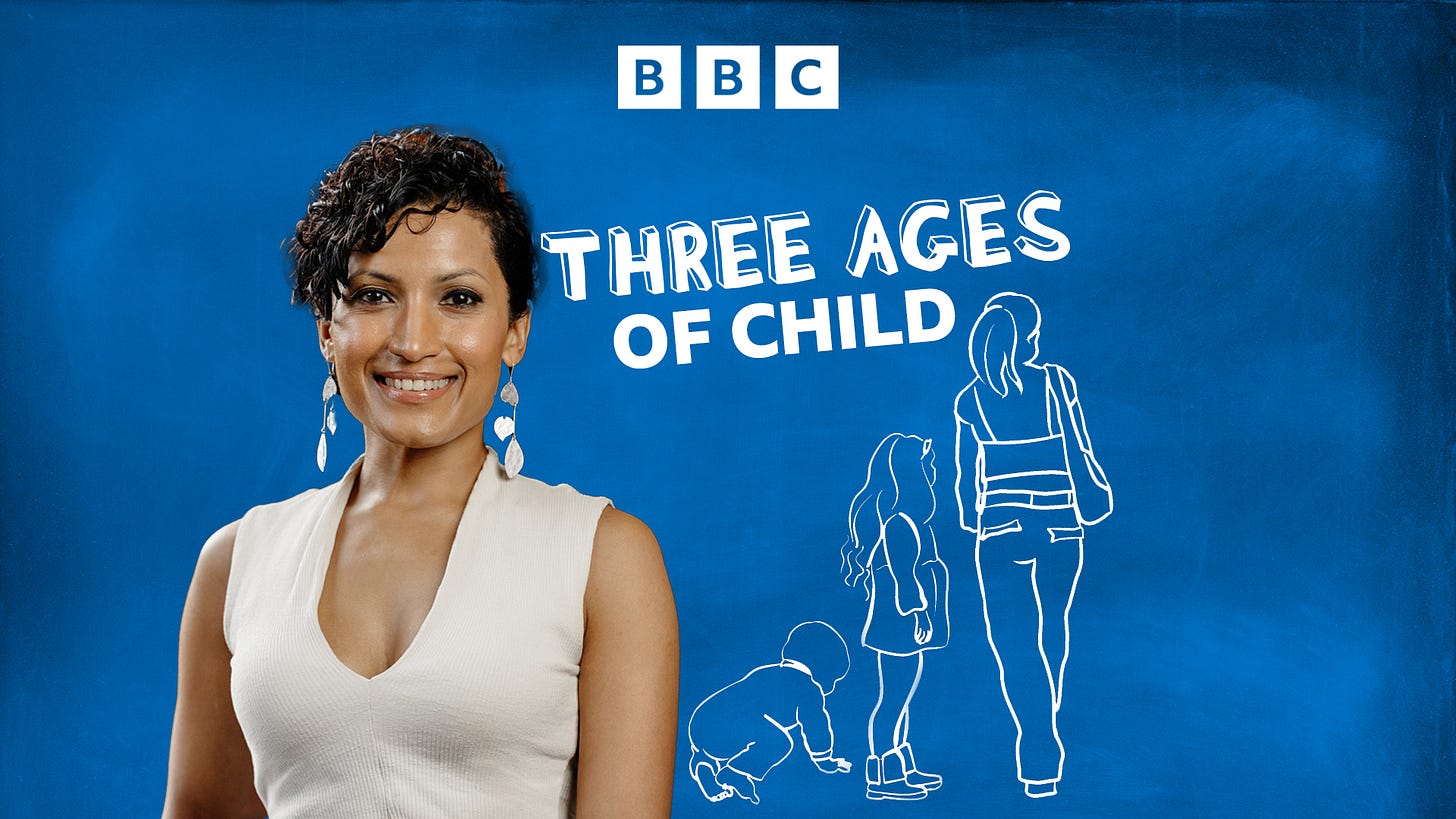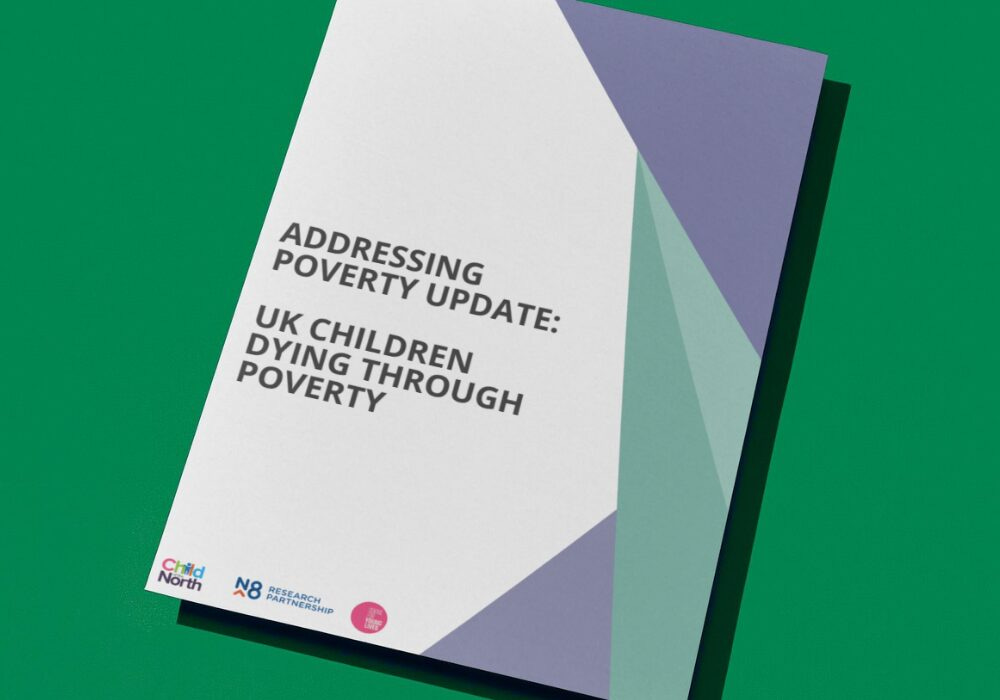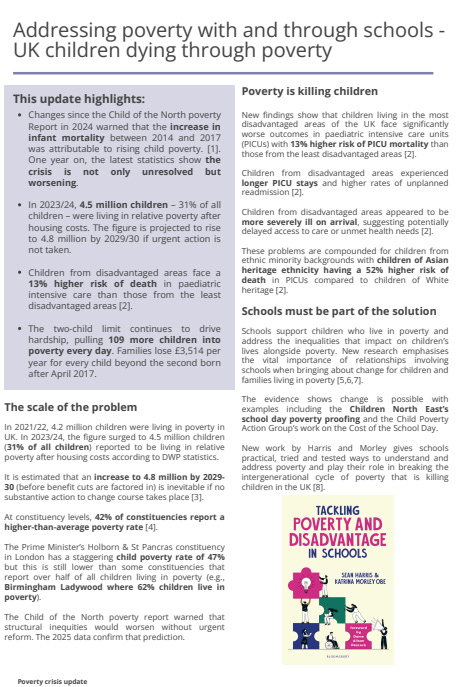Guest Blog: Beyond Classrooms & Clinics
Dr Guddi Singh: Why child health and education can work as one

It’s time for another guest blog, and this is one I’ll be recommending again and again. Through my work with Child of the North and the Centre for Young Lives, I’ve met many public health professionals who share my commitment to understanding and tackling educational inequality. We imagine a world where education alone isn’t enough, and where health and education work hand in hand to address these challenges. We understand the problems and the challenges, but share a collective optimism that poverty and inequality do not have to be an inevitable narrative in communities.
Dr Guddi Singh is one of those standout individuals.
After just a few calls and meetings, I genuinely felt a sense of hope. Hope that people such as Guddi, serving both the health sector and our communities, can make a real difference.
Dr Guddi Singh is a paediatrician, academic, and broadcaster known for her work at the intersection of medicine, social justice, and public policy. A graduate of Cambridge and Harvard, she trained in children’s and public health at leading institutions in the UK and abroad, and has worked across clinical, academic, and international development settings.
Alongside her frontline work in the NHS, Dr Singh is a passionate advocate for tackling the social determinants of health; the conditions in which children are born, grow, and live. She is committed to transforming how society thinks about health. Her PhD at King’s College London explores how healthcare might be radically reimagined to move beyond a narrow biomedical model toward systems that reflect the complex realities of people’s lives and address structural injustice.
Her media work includes presenting health-focused documentaries and programmes for the BBC, Channel 4, and Al Jazeera. She is also a compelling public speaker and policy commentator, regularly engaging audiences across medicine, education, and government.
The Doctor will see you now… and I’d know she’d make time for anyone who shares her passion for social justice!
As a brown immigrant girl growing up in a working-class town in the North East of England, I was told that people like me don’t amount to much.
That I would be lucky to get by, let alone to thrive.
The myth of Britain as a land of social mobility never rang true in Hartlepool. Kids’ opportunities were written into the streets we grew up on and the class we were born into.
That’s why making Three Ages of Child for BBC Radio 4 felt so personal. The series took me back not only to Hartlepool, but to communities across the country — and what it showed was devastating. It gave the lie to the idea that opportunity is equal in the UK. Children’s health today is one of the clearest mirrors of inequality, and the reflection is harsh.
“You can’t prescribe your way out of poverty”

In Hartlepool, I sat in a baby bank listening to young mothers describe what it feels like to need donations for basics like cots or prams.
One of them said:
“We’ve always felt low, like we don’t belong.”
That shame drives people away from the very services meant to support them.
As a doctor, I can prescribe an inhaler for asthma, but I can’t prescribe away the damp and mould that caused it. I can listen to a teenager in crisis, but I can’t prescribe them safe streets to walk home on or a youth worker to guide them.
You can’t prescribe your way out of poverty.
Poverty is a health condition and it’s contagious

In Tower Hamlets, East London, I saw children running free at Glamis Adventure Playground. But staff told me they had started serving food because too many children turned up hungry after school.
A place for play had become a place for survival.
Hunger follows children into classrooms. It dulls concentration, stunts growth, narrows futures. As Sir Michael Marmot reminded me: after austerity in 2010, within five years UK children had stopped growing at the same rate.
Today, our five-year-olds are seven centimetres shorter than their peers in the Netherlands.
Poverty is a health condition and it’s contagious.
It spreads across generations, shaping bodies, minds, and opportunities.
“How can children learn if those other things aren’t right?”
In Hartlepool again, I walked through Stranton Primary School with Executive Headteacher Neil Nottingham.
On the surface it was an ordinary school.
But tucked away were food parcels, a uniform exchange, even help desks for housing and benefits.
Neil told me:
“How can children learn if all those other things aren’t right? If a child hasn’t slept, or comes to school hungry, or is worried about eviction, how will they ever achieve academically?”
He’s right. Education and health cannot be pulled apart. A child who is cold, hungry, or anxious about housing will not learn, no matter how talented their teachers.
Fragmentation is the problem

Again and again I saw families bounced between fragmented services.
Health over here, education over there, housing somewhere else. Each sees only a slice of the child. Nobody holds the whole.
Professor Mark Mon-Williams put it plainly:
“You can’t take a family and say, that’s the education bit over here, that’s the health bit there, and we’ll do social care somewhere else. That’s not how lives work. But that’s how our services are organised.”
The result?
Lives falling through the cracks.
I’ve resuscitated toddlers in A&E from asthma attacks caused by damp housing. Those children should never have been on my table. Their crises were predictable, preventable, but our siloed services failed them.
What joined-up care can look like
But there are glimpses of a different way. Another narrative.
In Westminster, I met community health workers recruited from their own neighbourhoods, trained to knock on doors, listen, and help families tackle everything from mould to missed vaccinations.
The early results?
Fewer A&E visits, more children in school, families rehoused after years of waiting.
And at Reach Academy in Feltham, lunchtime is not just a meal. It’s “family dining”: children and staff sit together, share food, learn social skills, and build community.
As co-headteacher Tilly Browne told me:
“If you’re going to have a life of opportunity, you need your health. Without it, what do you have?”
These examples show that when health and education stop working in isolation, children thrive.
“Every child’s health is a mirror of the society they live in”
The real lesson of this journey is that every child’s health reflects the society around them. Their bodies, their growth, their mental health. They are living indicators of our collective choices.
And those choices are not neutral. They are political.
When we cut health visiting, underfund schools, or leave families to rely on charity for cots and nappies, we are deciding, consciously or not, whose futures matter.
Every child’s health is a mirror of the society they live in.
Right now, that mirror is telling us a story of a Britain that is smaller, hungrier, and more divided than it should be.
“We know what works. The question is: do we care enough to do it?”
We don’t lack evidence. We know what makes children healthy: safe housing, good food, green spaces, strong schools, joined-up support.
We know prevention costs less than crisis care. We know inequality is toxic.
The question isn’t whether we know what works. We do.
The question is whether we care enough to do it.
Going back to Hartlepool, and travelling through communities across the country, filled me with sadness at how badly we are failing children. But it also filled me with hope.
Because ordinary people are not waiting for government. They are already creating health: running baby banks, feeding children in playgrounds, reimagining schools, standing up for families. They are showing what it looks like when power shifts back into the hands of communities.
As a paediatrician, I have never felt the limits of my role more keenly.
But as a journalist, I’ve never been more inspired by the ingenuity and courage of the people I met.
That is why I made Three Ages of Child: to listen to those voices, to amplify them, and to remind us all that children’s health is not a niche concern. It is the moral test of our society.
Three Ages of Child airs on BBC Radio 4 from 29th September, and is available on BBC Sounds
A note on the Child of the North
Access the research & toolkits here
As previously shared, our latest Child of the North report Education Equity for the North of England: Challenges & Opportunities, published in September 2025, calls for children’s wellbeing, development and readiness for school to be a national priority
The second update in our #ChildrenFirst campaign reveals that the crisis is not only unresolved but worsening, and calls for:
Removal of the two child limit for disadvantaged families to lift 500,000 children out of poverty
Support for schools to take no-cost and low-cost actions to reduce the cost of the school day
Collaboration with children themselves, their families and the wider community to find solutions
In response to our latest findings, and to further our campaign to build a country that works for all children and young people, we have launched another toolkit resource to coincide with the report(s)
The toolkits or ‘how to’ guides are designed to support schools, child health services and local authorities to implement the report recommendations and improve outcomes for all children.
The next toolkit is now live and can be accessed/downloaded for free here.
Here’s how you can further help us to make certain that every child has the best possible start in life:
Follow us online and share campaign content across your networks. #ChildrenFirst
Highlight and share the reports and toolkits with your colleagues, partners, and audiences.
Add your voice publicly through blogs, articles, podcasts, or your own relevant channels.





